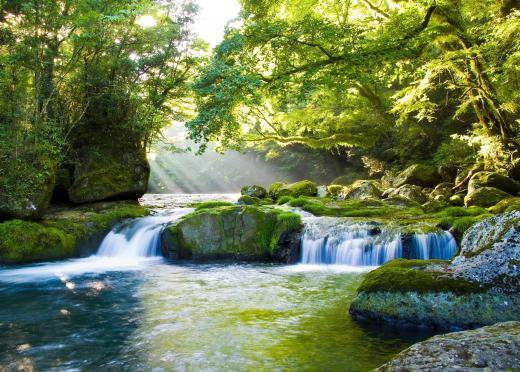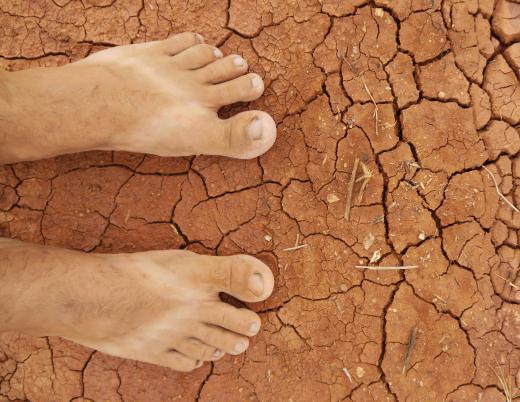What is the Abiotic Environment?
The abiotic environment includes all the nonliving factors and processes in an ecosystem. Sunlight, soil, water, and pollution, for example, are all important abiotic factors of an environment that affect life. The biotic environment, on the other hand, is composed of all the living organisms in an ecosystem, and includes factors such as disease, predators, prey, and human activity. Life depends on both of these environments for survival.
Light from the sun, an abiotic factor, makes life possible in almost all ecosystems. Green plants take solar energy and convert it into chemical energy through photosynthesis. As animals eat the plants, the energy moves through the biotic environment and is eventually expended as heat. This basic flow of energy shows how closely abiotic and biotic components are linked. This cycle is called an open system because it relies on the sun, a source outside the Earth.

Organisms also need basic elements, such as carbon, nitrogen, and phosphorus. These elements are abiotic when found in water or soil, but cycle through plants and organisms as nutrients via food and hydration. After an animal excretes or dies, bacteria break down these nutrients, returning them to the abiotic environment. Other than a few meteorites from space every once in a while, no new elements enter this closed system. The same components are used and reused over and over again — the elements dinosaurs consumed to survive are the same ones that people use today.

Water is another essential part of the abiotic environment. Factors such as availability, movement, temperature, saltiness, oxygen concentration, pH level, and chemical components affect the kinds of life that can survive in an ecosystem. Whether an ocean, lake, or river, water conditions can change suddenly or seasonally, affecting organisms that depend on the water for survival.

For all abiotic aspects of the environment, changing conditions require organisms to adapt or else suffer death. For example, a drought, flood, volcanic eruption, or earthquake drastically alters factors such as weather, water conditions, or even available elements and nutrients in the soil. Small, subtle changes can also have important effects. Slight water temperature changes can affect the ability of aquatic life to both breath and move, because water density changes with temperature.

It may seem like living creatures and plants are at the mercy of the abiotic environment, but in fact, life affects the non-living world as well. Pollution, for example, is a by-product of biotic life that changes water, air, or soil quality. As evidenced by increasing levels of CO2 in the atmosphere, human activities are currently changing the environment as well.
AS FEATURED ON:
AS FEATURED ON:















Discussion Comments
People often think of the abiotic environment as this non-living, static entity. The actuality is that there are a number of delicate and sensitive elements to ecosystem structure that are part of the abiotic environment. All of the earth's major geochemical cycles require the abiotic environment to interact with the biotic environment.
Our climate is dependent on the amount of carbon and nitrogen in the atmosphere. Things in the abiotic environment, like water and rock, help to regulate carbon in the atmosphere a large amount of the earth's carbon is stored in sedimentary rocks or absorbed into the earth's oceans.
This is just one example of how the abiotic environment is integral in human survival. Without these interactions, the planet would be an inhospitable place.
Post your comments